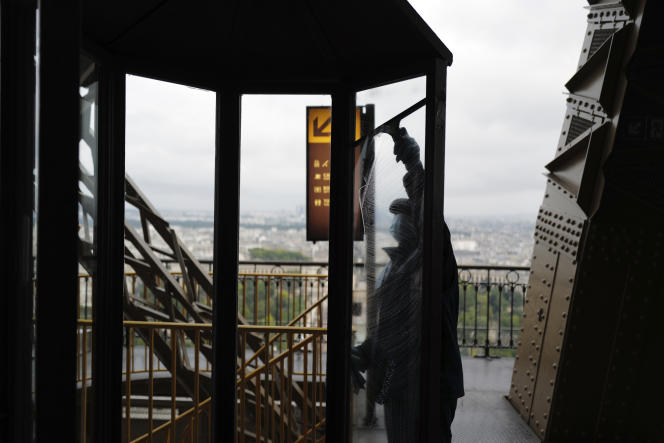“There are a lot of things wrong with this business. The operation was opaque, we did not know how the CDIs were given. The end of the collaboration was brutal for many of us. » This is how a former receptionist sums up her experience at the Société d’exploitation de la tour Eiffel (SETE). Like her, about fifteen former employees of the tower on fixed-term and temporary contracts testify to the World the existence of numerous irregularities in personnel management; anomalies that the management of the company recognizes, but claims to have recently eliminated.
The monument, which welcomes nearly six million visitors each year, 80% of whom are foreigners, and employs nearly 360 people, is managed by SETE, a local public company 99% owned by the City of Paris (which collects a fee of more than 10 million euros each year). The company suffered particularly from Covid-19, with losses of 43 million euros in 2021 and 52 million in 2020, saving itself thanks to the use of partial activity, loans and recapitalization. The discovery of high lead levels around the monument also led to delays in the last painting campaign and significant additional costs. SETE is now in debt to the tune of 110 million euros.
Even before the pandemic weakened the building, the accounts and the financial management of the company were singled out. The regional chamber of accounts (CRC) of Ile-de-France highlighted, in a report published in 2020, the increase in the use of precarious jobs (CDD and temporary workers) in the 2010s, as well as the increase in staff salaries. The tower hires seasonal workers during peak periods or to compensate for sick or maternity leave. It is historically the only gateway to work at the Eiffel Tower, particularly as a receptionist.
“It was like being on call”
“We had seasonal jobs, but we worked all year round. We chained fixed-term contracts at SETE and temporary assignments for the Synergie agency, says Elena Riboust, who worked at SETE between 2018 and 2020. In the interim, these were one-day assignments, we were notified in the morning and the first to drop out got the assignment. » Over the years, a pool of several dozen precarious workers has been formed to replace agents on permanent contracts in the three shifts that follow each other permanently (one in the morning, one in the evening, one on rest), making it increasingly more uncertain the prospect of obtaining enough missions. Sometimes the missions last only three hours, to replace a lunch break.
You have 75.11% of this article left to read. The following is for subscribers only.
